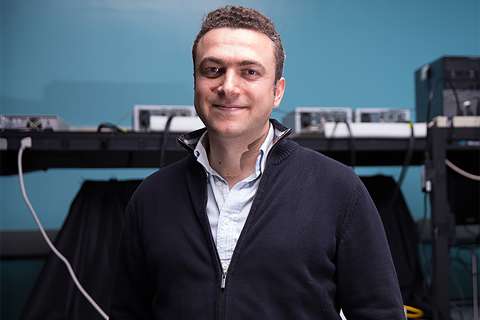As cancer maintains its standing as the second leading cause of death in the U.S., researchers have continued their quest for safer and more effective treatments. Among the most promising advances has been the rise of nanomedicine, the application of tiny materials and devices whose sizes are measured in the billionths of a meter to detect, diagnose and treat disease.
A new research review co-authored by a UCLA professor provides one of the most comprehensive assessments to date of research on nanomedicine-based approaches to treating cancer and offers insight into how researchers can best position nanomedicine-based cancer treatments for FDA approval.
The article, by Dean Ho, professor of oral biology and medicine at the UCLA School of Dentistry, and Edward Chow, assistant professor at the Cancer Science Institute of Singapore and the National University of Singapore, was published online by the peer-reviewed journal Science Translational Medicine. Ho and Chow describe the paths that nanotechnology-enabled therapies could take — and the regulatory and funding obstacles they could encounter — as they progress through safety and efficacy studies.
"Manufacturing, safety and toxicity studies that will be accepted by the Food and Drug Administration before clinical studies are just some of the considerations that continue to be addressed by the nanomedicine field," said Chow, the paper's co-corresponding author.
Compared with other available therapies, nanomedicine has proven to be especially promising in fighting cancer. In preclinical trials, nanomaterials have produced safer and more effective imaging and drug delivery, and they have enabled researchers to precisely target tumors while sparing patients' healthy tissue. In addition, nanotechnology has significantly improved the sensitivity of magnetic resonance imaging, making hard-to-find cancers easier to detect.
"A broad spectrum of innovative vehicles is being developed by the cancer nanomedicine community for targeted drug delivery and imaging systems," said Dr. Ho, the paper's corresponding author and co-director of the Jane and Jerry Weintraub Center for Reconstructive Biotechnology at the UCLA School of Dentistry. "It is important to address regulatory issues, overcome manufacturing challenges and outline a strategy for implementing nanomedicine therapies — both individually and in combination — to help achieve widespread acceptance for the clinical use of cancer nanomedicine."
Ho's team previously pioneered the development of a nanodiamond-doxorubicin compound named NDX. In preclinical studies conducted with Chow, NDX was found to be safer and more effective than unmodified doxorubicin, a clinical standard, for treating breast, liver and other cancer models.
Ho and Chow's new report features multiple studies in which the use of nanoparticles was translated from the preclinical to the clinical stage. In several of the highlighted studies, nanotechnology-modified drugs showed improvements over conventional, drug-only approaches because of their ability to overcome drug resistance (which occurs when tumors reject the drug and stop responding to treatment), to more effective tumor reduction, among other advantages.
The authors also describe how algorithm-based methods that rapidly determine the best drug combinations, and computation-based methods that draw information from databases of drug interactions and side effects, to help rationally design drug combinations could potentially be paired with nanomedicine to deliver multiple nano-therapies together to further improve the potency and safety of cancer treatments.
"This research review by Dr. Ho and his colleagues lays the groundwork for nanomedicine to become a widely accepted cancer therapy," said Dr. No-Hee Park, dean of the UCLA School of Dentistry. "This blueprint for navigating the process from bench research to mainstream clinical use is invaluable to the nanotechnology community."
Dr. Ho, also a professor of bioengineering and a member of the Jonsson Comprehensive Cancer Center and California NanoSystems Institute, noted that nanomedicine regulation is still in its early stages, but the clinical use of existing nanoparticle drugs, such as the protein-modified breast cancer drug Abraxane, is a promising start.
"The FDA's approval of Abraxane provides a strong foundation for the continued acceleration of new cancer nanomedicine therapies and imaging solutions in the fight against cancer," Ho said.
Research conducted by the teams of Ho and Chow has been funded by the National Cancer Institute, the National Science Foundation, the Wallace H. Coulter Foundation, the V Foundation for Cancer Research, a Society for Laboratory Automation and Screening endowed fellowship, Beckman Coulter Life Sciences, the National Medical Research Council of Singapore and a Singapore Ministry of Education Academic Research Fund Tier 1 grant.



